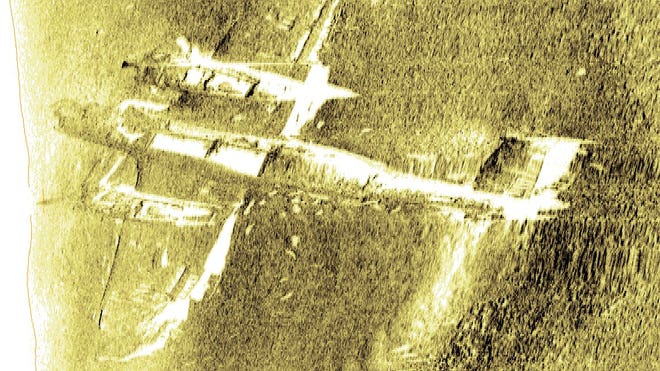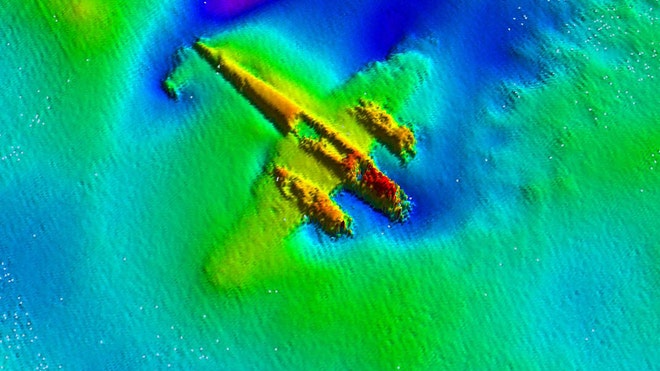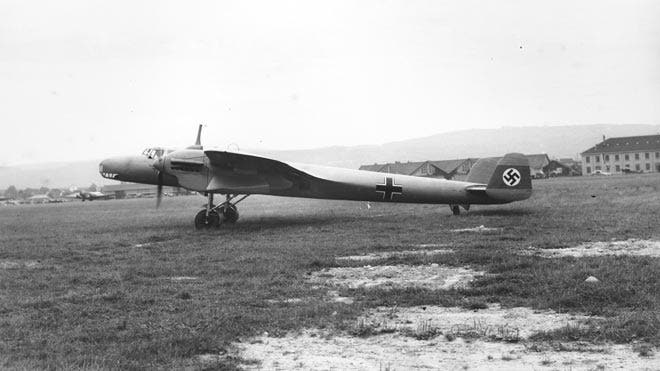Digging history: RAF Museum set to raise Nazi bomber from English Channel
Published May 30, 2013
FoxNews.com
A British museum is about to haul 8 tons of history out of the English Channel -- the only remaining Nazi Dornier bomber from the World War II Blitz on London.
The plane, one of a formation of German Dornier Do-17 that Hitler sent to the southeast coast of England in his efforts to blast the country out of World War II, has sat in a shallow grave 60 feet under water since 1940.
It was lost for decades, buried beneath the time, the tides and the seafloor of Goodwin Sands, a large sandbank off the coast of Kent County, the last bit of rolling English countryside before Britain gives way to the straits of Dover, 20 or so miles of cold sea, and ultimately, France.
'There are no other Dornier 17s left that we’re aware of. I really can’t stress enough how important this is.'
- Ian Thirsk, head of collections at the RAF Museum
And conservationists battling the weather had hoped to lift the plane out as early as today. It's an historic restoration effort years in the making, said project manager Ian Thirsk, head of collections at the RAF Museum in England.
“We’re pretty much on tenterhooks. It’s very exciting,” Thirsk told FoxNews.com. Unseasonable weather has delayed the actual lift, which will take a few hours and may occur as early as Sunday or Monday, with a decision due Saturday night.
“It’s been three years to plan this project, so the last stages are obviously critical,” he said.
Sidescan sonar images revealed the silhouette of the craft in 2008, as the shifting sands exposed the perfectly preserved plane for the first time. The Dornier’s very existence is remarkable: It’s a-one-of-a-kind piece of history, he said.
“There are no other Dornier 17s left that we’re aware of,” Thirsk told FoxNews.com. “I really can’t stress enough how important this is.”
The Dornier’s rarity is an odd fact of the era: The hundreds of fighters that England shot down were smelted during the war and reused, ironically turned into British aircraft to continue the battle against the Germans.
“We’ve got a Spitfire and a Hurricane and a German Messerschmidt,” Peter Dye, director general RAF Museum, told FoxNews.com earlier this month. “All the other aircraft were sent to smelters and recycled, ironically enough into our aircraft.”
“You might say it’s environmentally sound,” he added wryly.
Once pulled from the waters, exposure to air will immediately begin to degrade the plane, Thirsk explained. So the RAF Museum, in conjunction with the Port of London Authority, the National Heritage Memorial Fund, and Imperial College London have designed an elaborate process of preservation.
After a special lift raises the plane from the seafloor, it will be doused with sea water and covered with chemicals and gels to preserve it, before the wing section is removed for transportation.
It will then be driven a few hours down the highway -- likely the first time a Nazi craft has navigated England’s roads in half a century.
The preservation process involves a months-long -- or even years-long -- lemon-juice shower, an odd solution devised by the Imperial College’s Department of Material Science that strips away the Channel's chemicals and prevents exposure to oxygen.
By washing away the chloride with citric acid, the surface is effectively protected and a barrier to further corrosion built, Dye explained. The process is lengthy, and the entire proceeding will cost roughly half a million pounds (around $750,000). But the uniqueness of the find makes it truly worthwhile, he told FoxNews.com.
“We feel that this is a unique survivor, the only German bomber from the Blitz that’s left. And it’s hugely important to British national history,” he said.
Read more: http://www.foxnews.com/science/2013/05/30/museum-to-raise-nazi-bomber-from-english-channel/?cmpid=cmty_plus_fn#ixzz2UpdXrxR7
.
.
.



